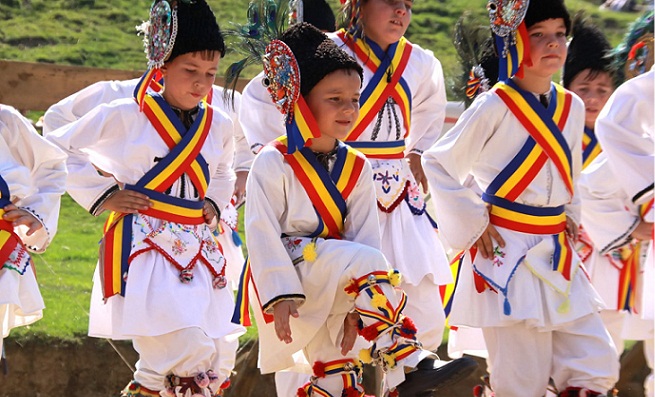
Tourists who decide to travel to Romania are especially surprised by traditional Romanian dances such as the "calusarii" or "hora" (dance in a circle). These dances combine graceful movements with dazzling rhythms. " Calusarii " represents the initiation rituals, while the vile "hours" can be danced by all members of the community, especially on Sundays. The true meaning of these dances is to recreate a distant and ancient time.
At Christmas and New Years, children and young people go from house to house singing and dancing very beautiful Christmas carols. In some parts of Romania, they wear traditional masks. In return, they receive fruits and delicious cakes. The most famous and traditional Christmas carols are called Steaua, Plugusorul, Sorcova and Capra. Boboteaza, is celebrated on January 6 and Saint John’s Day, which is celebrated on January 7, marks the first week of the year. On these days of celebration, Romanians go to church collecting holy water for healing and spiritual purification.
Martisorul (March 1) is a celebration of hope, optimism and faith in a better future. The symbol of this holiday is a red and white chain with an amulet (a coin or a pendant). Parents wear this chain to tie around their children as a symbol of good luck and health.
Romanian traditional architecture is preserved mostly in rural areas, but also in a lot of museums. Founded in 1936, the Village Museum in Bucharest is one of the most valuable places in the world. Be sure to visit it if you want to know more about Romanian culture.
